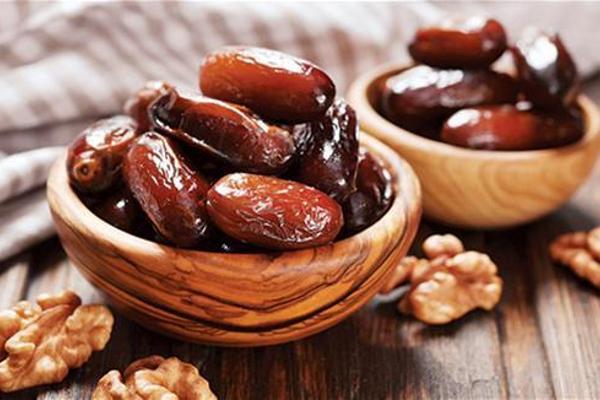Blessed fruits
Aylin Öney Tan - aylinoneytan@yahoo.com


The answer came swift: either or neither!
This question may not mean much in a different culture, or at least seem very odd as one is salty the other is sweet; they are not even one of the same kind, or alternatives to each other. But in Turkey everybody gets the message instantly; the question was about which fruit should be preferred to break the fast. And no, the question was not about the holiness rating of the two, or which one was mentioned more in the Quran; it was a TV health show, and again the answer was on the health risk or benefit basis of breaking the fast with one of those alternatives. Of course, both fruits have obvious benefits, but also feature risks such as containing too much salt or are high on the glycemic index, besides having good qualities like being high antioxidants or rich in super fibers.
For most Turks, olives are indispensable elements on tables; no daily breakfast is complete without black olives. Similarly, no sahur, the meal before dawn, or iftar, the meal to break the fast, is complete without olives. As olives are grown in Turkey, and already have been in the culture of these lands even before the arrival of Islam, it is in our veins. On the other hand, the date is something we never had until the 1980s.
It was not grown in Turkey, but had to be imported. Both naturally and as a political choice, Turkey was a totally self-sustained country, so food was not imported, partly because of self-sufficiency and partly due to a lack of foreign currency. Only a few items with special permission could be imported and only if they were crucial to Turkish culture, like coffee. Only after the 1980s, when consumer goods imports were allowed, did we start having dates, especially during the month of Ramadan. Before that, people broke their fast with another sacred food mentioned in the Quran, obviously the olive. Needless to say, in Ottoman times, dates were more common, as they grew in then-Ottoman lands.
Today in Turkey, the date is still a fruit that belongs to Ramadan. Increasingly, breaking the fast by date is believed to be the proper thing to do, as the prophet once did. Whenever Ramadan comes, markets are invaded with dates of all sorts. As we approach the end of the holy month, it will be the end of date season for us. So it’s time to enjoy the blessings of the holy fruit!
Bite of the week
Recipe of the Week: One of my unforgettable travel moments was in a cemetery in the town of Melika, overlooking Ghardaïa, in the Algerian Sahara. We were three women wandering in the labyrinth-like alleys of the town, and we eventually found ourselves up in the cemetery. There were a group of local women up there to enjoy the evening breeze and to watch the amazing sunset flooding light upon the town of Ghardaïa, turning the castle into a glowing torch in the midst of the stone dessert. What they shared with us was as amazing as the view. A semolina cookie with a purée of dates, laced with the heavenly aroma of orange flower water. Trying to understand from my non-existent Arabic, its name sounded something like mkhrd!
Here is my version of Makhroud, less sweet with no syrup, and less fatty as it’s not fried. To make the dough, mix three cups fine semolina, one of cup flour, one sachet of baking powder, ¾ cups of olive oil or other melted butter or ghee (coconut oil might be fine too, but will add a tropical note), a few tablespoons of orange flower water (or Arôme Fleur d’Oranger) and a pinch of salt. Knead this mixture into a dough, adding one cup of water little by little while kneading. Let the dough rest a bit to absorb the moisture.
Meanwhile, finely chop 500 grams of dates, and whizz in a robot with the grated peel of an orange, one teaspoon of cinnamon, and 2-3 tablespoons of orange flower water, or mash with a fork. If you have soft, sticky kinds of dates, this process will be easier. Divide the dough into two equal parts; roll each piece into a long roll that is the thickness of your wrist and flatten to half a centimeter, producing a long triangle.
Place half the date purée on the dough, leaving room on the edges to fold. Bring the two sides of the dough together and press to stick; turn the roll over and flatten a bit, cut the date-filled semolina roll diagonally into a diamond or baklava shapes. Place the pieces on an oven tray lined with paper; flatten each piece with a fork making decorative lines. Repeat the process with the other half of the dough and the filling. Bake in a preheated oven at 180ºC for about 40 minutes, or until golden.

